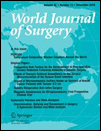Impact of Postoperative Pneumonia Developing After Discharge on Long-Term Follow-up for Resected Lung Cancer
Abstract
Background
Postoperative nosocomial pneumonia is a common immediate complication following lung resection. However, the incidence and mortality of pneumonia developing after discharge (PDAD) for lung-resected patients during long-term observation remain unclear. The aim of this study was to investigate the clinical features of PDAD in patients with resected lung cancer.
Methods
We conducted a retrospective cohort study of 357 consecutive patients with lung cancer who had undergone lung resection at a single institution, between April 2007 and December 2016. The clinical characteristics, pathological features, and overall survival were analyzed. Propensity score matched analysis was used for the evaluation of overall survival between PDAD and non-PDAD groups with adjusted relevant confounding factors.
Results
PDAD was observed in 66 patients (18.5%). The cumulative incidence of PDAD was 14.9% at 3 years and 21.6% at 5 years. Mortality of PDAD was 30.3%. Multivariate analysis demonstrated that the risk factors for PDAD were age (OR 1.07; P = 0.005), oral steroid use (OR 5.62; P = 0.046), and lower-lobe resection (OR 1.87; P = 0.034). After propensity score matching, 52 patients with PDAD and 52 patients without it were compared. The incidence of PDAD resulted in a worse 5-year overall survival (56.1 vs. 69.3%; P = 0.024). The Cox proportional hazards model indicated that PDAD was associated with poor overall survival (HR 1.99, P = 0.027).
Conclusions
Our findings revealed a high incidence and mortality of PDAD among patients who had undergone lung resection with long-term follow-up. Therefore, PDAD could be associated with poorer overall survival.




